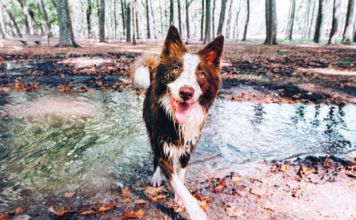For Dogs Used in Research, a New Leash on Life
Its a particularly fraught conundrum. On one hand, using dogs in laboratory research has led to improved cancer treatments, the discovery of insulin, the development of the pacemaker, more effective pharmaceuticals, and the heart-lung machine used in open-heart surgery - advances that in many cases have helped dogs themselves as well as people. On the other hand, the sturm and drang has intensified between the 44 percent of Americans who live with dogs as pets and the researchers who depend on them to improve health. No matter how much medical good lab dogs do, more and more people see their dogs as family members and do not like the idea of their pets species mates having to live in cages and be subjected to possibly dangerous, toxic, and sometimes painful treatments - even for the noble cause of medicine. Perhaps thats part of the reason that in 1979, some 211,000 dogs were used in biomedical research and in 2016, 61,000. (For perspective, more than 3 million dogs enter shelters each year, according to the ASPCA.)
Few Deaths from Dog Attacks Each Year, and Theyre Largely Preventable
Exceedingly few people die from dog bites or other types of canine attacks. In fact, very few people die because of altercations with animals of any kind. In a study released in Wilderness & Environmental Medicine this year, researchers combing data from the Centers for Disease Control & Prevention found that during the eight years spanning 2008 to 2015, only about 200 people a year died from unfortunate interactions with animals. Farm animals like horses, cows, and pigs, along with other mammals that included cats and raccoons, were responsible for the most deaths to people - 72 per year. Next came deaths from venomous animals - not snakes so much but, rather, hornets, wasps, and bees. They resulted in an average of 60 deaths each year.
A Museum Devoted to Dachshunds
Plan a trip to Bavaria, and perhaps visions of Hansel and Gretel-style houses, Black Forest Cake, and cuckoo clocks will dance in your head. But dachshunds?
City Dogs, Country Dogs – Theres Something for All of Them
Cant think of new fun things to do with your dog this summer? Why not take her to Barnes & Noble with you? Or Macys? Or Tiffanys, for a little bling?
Blood Test for Skin Disease May Help with Both Prevention and Treatment
Too many dogs end up with skin disease in the form of atopic dermatitis (inflammatory skin disease associated with allergies); pemphigus foliaceus (pustules and crusting on the skin surface); or perianal fistulas (which causes straining during defecation and often, a decreased appetite).
Dog Walking: the Good, the Bad, and the Lazy
Fitness experts say we should each try to take about 10,000 steps a day, which amounts to walking five miles - or about 1,800 miles a year. Well, guess what? If you have a dog, youre covering 1,000 of those miles by walking him. Thats the latest from British pet food manufacturer Harringtons, which surveyed 2,000 dog owners. Their dog walking lasted 34 minutes, on average, and covered just under 2 miles.
Score One For the Dogs
A Massachusetts man who abused his dog so viciously that the animal had to be put down will serve eight to 10 years in prison for his offense, followed by a two-year probation upon his release. He also is never allowed to own a dog again.
Dog as Wingman
Guys in search of a relationship, forget spending grueling hours at the gym in an attempt to make your body more buff and therefore more attractive to women. Just get a dog. Research published in the journal Anthrozoos: a multidisciplinary journal of the interactions of people and animals, found that men with a dog have an easier time getting a womans phone number.
Biting the Hand that Quakes
As a dog owner, youve no doubt observed that people who are nervous around dogs are the ones who often bring out their aggressive tendencies. It makes sense: nervous people beget nervous canines who act out by trying to work through their jitters via aggression. Now research makes the point empirically.
Left in the “Suggestion” Box…
In your last issue, your Preview for the following month referred to some articles that werent in the next newsletter. Please either describe whats coming in the next issue or change the title from a Preview of the coming months material to Coming in Future Issues. I sometimes look forward all month to an article, and then it doesnt appear. Please dont throw away my goodwill and commitment to an otherwise great newsletter.
Cruisin
Most cruise lines do not allow dogs unless they are service animals, and for good reason. Theres no good place for them to play on the ships, no place to relieve themselves, strict health codes that would be hard to stick to with dogs aboard, and laws about quarantining depending on the ports of call visited by the ocean liners. One exception, and only one, is Cunard Cruise Lines Queen Mary II, which sails between New York and Southampton, England. The dogs on that boat are treated in style - with fleece blankets, a complimentary portrait with you, and a kennel master who takes care of walks, indoor play time, and clean-up.
Yes, They Can Read Our Faces. Now Its Time to Learn to Read Theirs.
Its well established that when a dog licks her lips, it means she is feeling nervous or anxious. (People do it, too.) Now, new research shows that they lick their lips in response to our angry faces. British and Brazilian researchers reporting in the journal Behavioural Processes made the finding when they observed 17 family dogs of various breeds looking at pictures of people with either happy/playful facial expressions or angry/aggressive ones. The dogs licked their mouths significantly more frequently when looking at the bad-mood faces (more than twice as much, on average).












